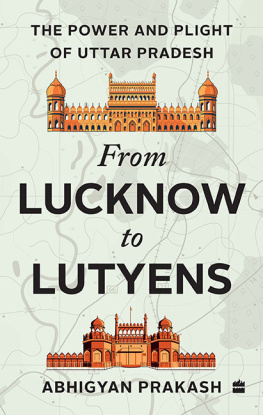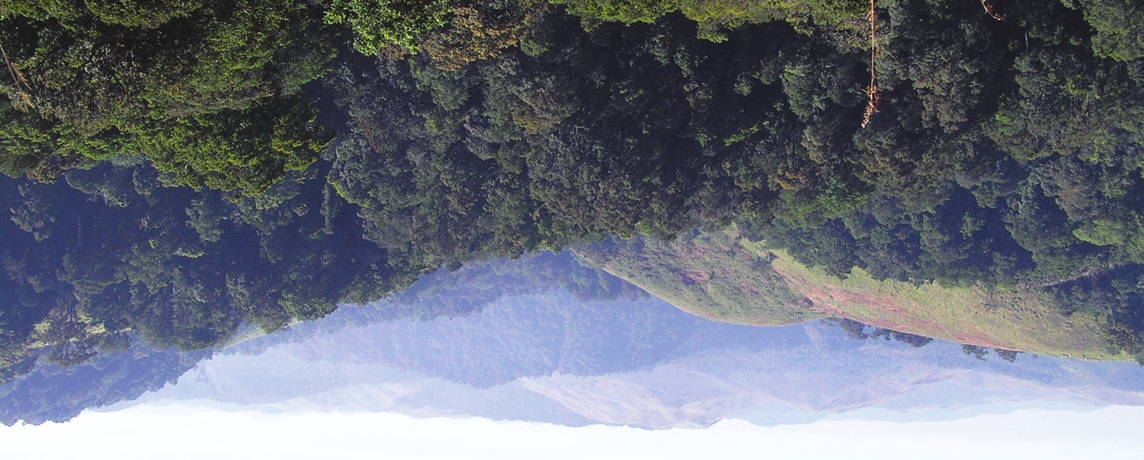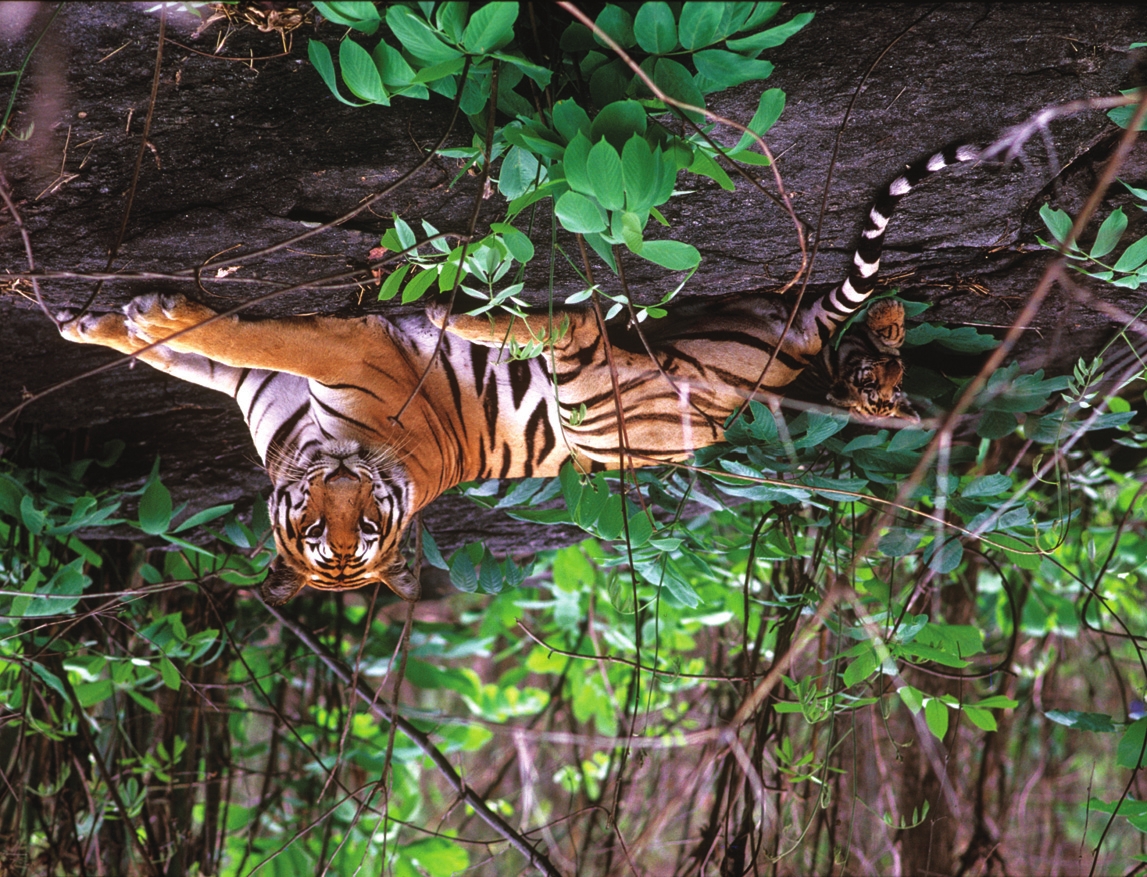 LAND of the
LAND of the
STRIPED STALKER Wildlife of Madhya Pradesh LAND of the
STRIPED STALKER Wildlife of Madhya Pradesh Text Rajesh Gopal Photographs Rajesh Bedi
wisdom tree Madhya Pradesh Tourism First published in 2009 by Wisdom Tree 4779/23 Ansari Road Darya Ganj New Delhi - 110002 Phone: 91 - 11 - 23247966/ 67/ 68 wisdomtreebooks@gmail.com The project has been supported by Madhya Pradesh State Tourism Development Corporation Limited. Printed in India. Text Rajesh Gopal Photographs Rajesh Bedi; Madhya Pradesh Tourism: (p. 22-23, 26 right, 27, 28, 33, 34, 36, 39, 40, 42, 45, 46, 49 above, 52, 62, 68, 85, 86-87, back cover); C.C.F. (W.L) Kuno Wildlife Sanctuary (p. 73). 73).
Maps: Kanha Publications (p.12); NTCA/WII (p. 18, 26, 32, 38, 44, 50, 53, 59, 61, 65); Project Tiger (p. 29, 35, 41, 47). All rights reserved. No part of this publication may be reproduced, or transmitted in any form or by any means, without the prior permission of the author and the publisher. ISBN 978-81-8328-153-9 Design: tiffinbox Front cover: A tiger on the prowl at Kanha Tiger Reserve.
Back cover: A herd of Spotted deer graze contentedly in the golden afternoon light at Kanha Tiger Reserve. CONTENTS Acknowledgements Preface Introducing the Tiger State Tiger Reserves Bandhavgarh Kanha Panna Pench Sanjay - Dubri Satpura Other Protected Areas Kuno - Palpur Wildlife Sanctuary Ratapani Wildlife Sanctuary Madhav National Park Prominent Wildlife of Madhya Pradesh Big Cats: Tiger and Leopard Other Wildlife Appendix I: Bird and Butterfly Species Found in Madhya Pradesh Appendix II: Scientific Names of Prominent Wildlife Hotel Listings
ACKNOWLEDGEMENTS Several colleagues have helped me in the preparation of this book, and it may not be possible to list them all. I especially appreciate the encouragement and the help from Y.V. Jhala, Qamar Qureshi, Rajesh Bedi, Naresh Bedi, H.S. Negi, Aseem Srivastava, S.P. Yadav, Gopa Pandey, Sheetal Bisht, P.R.
Sinha and Narendra Kumar. LEFT ---------------------------- The grasslands of Bandhavgarh Tiger Reserve are softly illuminated by the early morning light. PREFACE Madhya Pradesh has a diversity of life forms owing to its rich, unique geographical and climatic attributes. The large number of protected areas in the state highlight the concern and efforts of the state government to conserve and protect its floral and faunal heritage. The state is virtually a tigerland, and places like Kanha, Bandhavgarh, Pench, Satpura and the nearby forests are home to the bulk of the population of tigers, their co-predators, prey and habitat of Central India. I had the good fortune of working for over thirteen years in Kanha and Bandhavgarh.
Every day was a learning experience for me during these wonderful years, which I would love to relive if given a chance! This book is a modest effort to present a broad picture of the prominent protected areas, tiger reserves and flora and fauna of Madhya Pradesh. However, the thrill of seeing a tiger in the wild, or hearing the rutting call of a Barasingha stag, the alarm call of a Spotted deer or the urgent calls of a peafowl are those moments which should best be experienced. The direct sighting of a wild animal in its natural habitat is the best understanding of Nature. The tiger is Indias iconic national animal. It widely inhabits forested and non-forested natural habitats in seventeen states of India including Madhya Pradesh. Owing to its significant ecological position, the conservation status of the tiger in our ecosystems signifies RIGHT ---------------------------- the status of their health.
The good health of these ecosystems in turn signifies that the The rolling hills and verdant quality of ecological services rendered by them, including ensuring water security critical to forested areas of Bandhavgarh Tiger Reserve provide ample our survival and to sustainable development is optimum. cover for a variety of wildlife. This is unfortunately not the case. The degradation and fragmentation of forests and non- forested natural areas across the length and breadth of our country reflects the decline in ecological services. This is seen in the form of poor water regime and the loss of our unique biodiversity. The decline has also undermined the productivity of the livestock of people inhabiting the forested regions, further aggravating their impoverishment.
The need for conserving the tiger, other wild animals and their habitats must therefore be seen in the light of these ecological imperatives. This calls for an integrated, holistic approach
towards tourism as well as managing land infrastructure, since such actions are use. This uphill task can only be achieved by detrimental to tigers and other wild animals. mainstreaming wildlife concerns in various The Government of India, state governments types of land use operating in protected areas and various institutions of civil society are where the primary goal may not be wildlife jointly responsible for the conservation of conservation. wildlife. The Constitution of India urges us to protect our wild denizens.
Our visits to Over the years, protected areas in many states protected areas should be both for the have witnessed a steep increase in the number enjoyment of our natural heritage and to of visitors, and Madhya Pradesh is no elicit public support for its conservation. exception. This is indeed a welcome sign for fostering tourism, but is a cause for concern It is earnestly hoped that the information as well. We must not forget the fact that these provided in this book would not only help protected areas and core areas of tiger visitors in planning their trips to the reserves are the birth place of the tiger and protected areas and tiger reserves of Madhya other wild animals, requiring complete Pradesh, but will also foster awareness on the tranquility from any kind of disturbance. ecological imperatives to protect our wildlife Thus, it becomes an ecological imperative to to give an assured future to our wild flora and foster low key, ecologically sustainable fauna. A visitor to a protected area must tourism restricted to the fringes of these assume the role of a naturalist so that the reserves and protected areas.
The outer visit is rewarding without causing any corridor connectivity of these areas should distress to the natural inhabitants of our not be used for large-scale tourism forests. Land of the Striped Stalker: Wildlife of Madhya Pradesh --------------------------------------------------------------------------------------------------------------------
INTRODUCING THE TIGER STATE Madhya Pradesh is a large, landlocked state located in the heartland of India. It shares borders with other states like Gujarat, Rajasthan, Uttar Pradesh, Chhattisgarh and Maharashtra. In terms of area, the state ranks second in the country, with forest cover occupying almost one-third of its geographical area. The geographical centre of India is situated at Karondi in the Jabalpur district of Madhya Pradesh. The physical features of the state are very interesting, comprising of plateaus, hills, plains and rivers.
Next page












![Keith Bain - Frommers India [2010]](/uploads/posts/book/43617/thumbs/keith-bain-frommer-s-india-2010.jpg)
 LAND of the
LAND of the




